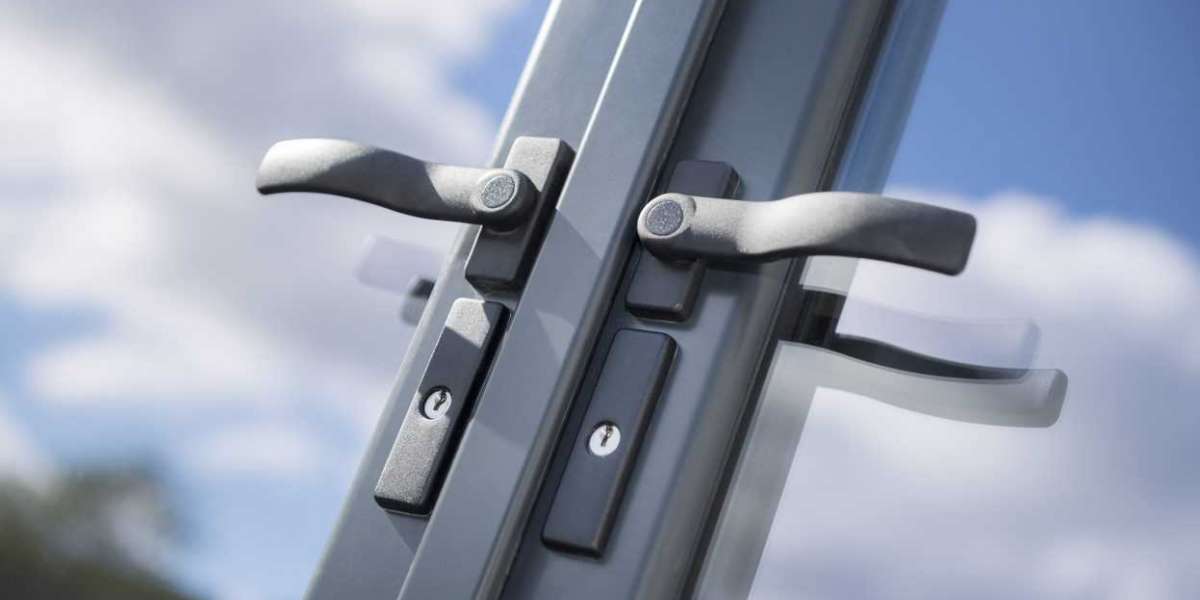Restoring Smooth Operation: A Comprehensive Guide to Repairing Your Bifold Door Top Pivot
Bifold doors, also referred to as folding doors, are a popular choice for maximizing space and developing a smooth transition between rooms or in between indoor and outdoor living locations. Their unique folding mechanism permits for larger openings than standard hinged doors, making them perfect for closets, kitchens, utility room, and even as patio doors. However, the smooth and efficient operation of a bifold door tune-up door depends upon several essential components, and among the most crucial, yet frequently neglected, is the leading pivot.
The leading pivot is a small however crucial system that sits on top corner of a bifold door panel, permitting it to turn smoothly within the track system. Gradually, due to wear and tear, inappropriate alignment, or even unintentional damage, this pivot can stop working. A malfunctioning top pivot can cause a host of aggravating problems, from sticking doors and loud operation to finish immobility. Thankfully, fixing or changing a bifold door top pivot is often a workable DIY job, saving you the cost of expert repairs and bring back the performance of your door.
This comprehensive guide will stroll you through the process of understanding, detecting, and repairing a bifold door leading pivot. We will explore the parts included, recognize common issues, equip you with the essential tools and products, and provide a detailed repair procedure. Whether you are an experienced DIY lover or a property owner tackling home repairs for the very first time, this article will empower you to with confidence deal with a defective bifold door top pivot and get your door operating smoothly when again.
Comprehending the Top Pivot System
Before diving into the repair procedure, it's advantageous to comprehend the role of the top pivot within the wider bifold door vertical adjustment door system. The top pivot, in combination with the bottom pivot (frequently described as a guide or wheel), works to control the movement and stability of each door panel.
Typically, a bifold door hinge adjustment door system includes:
- Top Track: A metal track installed horizontally at the top of the door opening. This track houses the leading pivots and guides the door panel's motion.
- Bottom Track or Guide: Some bifold door systems use a bottom track, while others employ a bottom guide that is either a pin or a wheel, interacting with a groove or channel on the floor or door jamb. This bottom part helps stabilize the door panel and preserves positioning.
- Top Pivots: These are small, typically plastic or metal components that are inserted into the leading edge of the door panel and ride within the leading track. They allow the door panel to pivot and slide smoothly along the track.
- Connecting Hinges: Hinges that connect the specific door panels together, enabling them to fold in a concertina style.
- Door Handles and Hardware: Hardware used for operating and protecting the bifold door.
The top pivot bears a considerable load, facilitating the smooth moving and folding action of the door. It needs to be robust adequate to stand up to continuous usage, yet accurate enough to enable simple and easy movement. Comprehending its function assists in appreciating why its appropriate function is so important to the overall operation of the Weatherproof Bifold Door Repairs door.
Identifying Common Top Pivot Problems
Acknowledging the signs of a stopping working leading pivot is the first action towards an effective repair. Here are some common indications that show a problem with your bifold door's leading pivot:
- Sticking or Jerky Door Movement: The door ends up being tough to open or close efficiently, being reluctant or capturing as it moves along the track. This is typically the most visible symptom.
- Noisy Operation: You may hear grinding, squeaking, or clicking sounds as the door is operated, indicating friction or damage within the pivot mechanism or track.
- Door Panel Drooping or Sagging: If the top pivot is worn or broken, the door panel may droop somewhat at the top, triggering misalignment and further preventing smooth operation.
- Noticeable Damage to the Pivot: Upon inspection, you may be able to see fractures, chips, or breaks in the plastic or metal components of the leading pivot itself.
- Door Jumping Out of the Track: In serious cases of pivot failure, the door panel may jump out of the top track altogether, ending up being totally unusable and possibly harming the door or frame.
- Increased Effort to Operate: If you find yourself having to put in more force than typical to open or close the door, it could be an indication of increased friction due to a stopping working pivot.
If you observe any of these symptoms, it is extremely likely that your bifold door's top pivot needs attention. Disregarding these issues can result in additional damage to the door, track, or surrounding frame, making the repair more complex and expensive in the long run.
Tools and Materials You'll Need
Before you begin the repair, collect the needed tools and materials to ensure a smooth and effective procedure. Having actually everything prepared beforehand will conserve you time and disappointment.
Tools:
- Screwdriver Set: A Phillips head and flathead screwdriver will be essential for eliminating and setting up screws related to the pivot and door hardware. Ensure you have various sizes to fit different screws.
- Pliers: Pliers can be useful for grasping and steering little parts, particularly if the old pivot is stuck or challenging to get rid of.
- Hammer (Optional): A lightweight hammer might be needed to gently tap the brand-new pivot into place, if required by the design.
- Measuring Tape: To guarantee accurate positioning and positioning when installing the brand-new pivot.
- Pencil or Marker: For marking positions and ensuring proper positioning.
- Shatterproof glass: Protecting your eyes is essential when working with tools and hardware.
- Gloves (Optional): To protect your hands and offer much better grip.
Products:
- Replacement Top Pivot: This is the most crucial product. It's necessary to buy a replacement pivot that is suitable with your particular bifold door system. Take the old pivot with you to the hardware shop for contrast, or take down the door producer and design if possible. Top pivots come in different sizes and styles.
- Lubricant (Silicone Spray or Dry Graphite): Lubricating the track and new pivot will make sure smooth, peaceful operation and prolong the life of the pivot.
- Wood Filler or Wood Glue (Optional): If the screw holes holding the pivot in place are removed or damaged, wood filler or glue might be needed to enhance them.
- New Screws (Optional): If the existing screws are harmed or removed, have a set of replacement screws of the right size and type on hand.
Step-by-Step Guide to Repairing the Top Pivot
With your tools and materials prepared, you can now proceed with the repair. Follow these step-by-step guidelines thoroughly:
Step 1: Safety and Preparation
- Put on your safety glasses.
- Guarantee the workspace is clear and well-lit.
- Gather all your tools and products and position them within easy reach.
Step 2: Inspect and Access the Top Pivot
- Carefully analyze the top pivot of the troublesome door panel to aesthetically examine the damage. Try to find cracks, breaks, or signs of wear.
- Identify how the pivot is connected to the door. Most are normally held in location by screws.
- You might require to a little open or close the bifold door to gain much better access to the leading pivot.
Step 3: Remove the Old Top Pivot
- Using the proper screwdriver (typically Phillips head), thoroughly eliminate the screws protecting the leading pivot to the door panel.
- If the screws are removed or tough to remove, you might require to use pliers to grip the screw head and gently turn it. Avoid damaging the surrounding door material.
- As soon as the screws are gotten rid of, gently pull out the old leading pivot. If it's stuck, use pliers to gently wiggle and pull it totally free.
Step 4: Prepare for the New Pivot (If Necessary)
- Inspect Screw Holes: Examine the screw holes in the door where the pivot was attached. If they are removed or bigger, you might need to reinforce them.
- For Minor Stripping: Apply a percentage of wood glue into the screw hole and let it partially dry for a couple of minutes. This will offer the screws a better grip.
- For Severely Stripped Holes: Use wood filler to fill the stripped holes completely. Enable the filler to dry and harden according to the item directions. Once dry, pre-drill pilot holes a little smaller than the new screws to make sure a safe and secure accessory.
Step 5: Install the New Top Pivot
- Position the new leading pivot in the very same orientation as the old one was removed.
- Align the screw holes of the new pivot with the holes in the door panel.
- Insert the screws and tighten them firmly with the screwdriver. Avoid overtightening, which could remove the screw holes or damage the pivot. Make sure the pivot is securely connected however not excessively tight.
Action 6: Lubricate the Track and Pivot
- Use a small amount of silicone spray or dry graphite lubricant to the top track of the bifold door, focusing on the area where the top pivot will run.
- Likewise, gently lube the moving parts of the brand-new leading pivot itself. This will promote smooth operation and reduce friction.
Action 7: Test and Adjust
- Thoroughly run the bifold door, opening and closing it a number of times.
- Inspect for smooth, peaceful motion. If the door still sticks or binds, re-inspect the pivot for correct installation and positioning.
- Guarantee the door panels fold and unfold correctly and that the door is not rubbing against the frame or track.
- If required, small modifications to the pivot position or track positioning might be required. Consult your bifold door maker's instructions for specific change treatments if offered.
Step 8: Clean Up
- When you are satisfied with the door's operation, tidy up your workspace and put away your tools.
Troubleshooting Common Issues
While fixing a leading pivot is often simple, you might experience some challenges. Here are a couple of fixing pointers:
- Pivot Doesn't Fit: If the new pivot doesn't fit into the track or door, double-check that you have the correct replacement type. Compare it carefully to the old pivot and the door specs.
- Screws Won't Tighten: Stripped screw holes are a typical concern. Refer back to Step 4 and utilize wood filler or glue to strengthen the holes before trying to tighten the screws once again.
- Door Still Sticks After Pivot Replacement: If the door still does not run smoothly after replacing the pivot, the issue might lie in other places. Inspect the bottom pivot/guide, the track for debris or damage, or the door panel hinges for tightness.
- Door Panel Misalignment: If the door panels are not aligned properly after repair, make sure the top pivot is appropriately seated in the track which the door panel is properly placed within the frame. Inspect for any warping or damage to the door panel itself.
Keeping Your Bifold Door Pivots
Preventative maintenance can substantially extend the life-span of your bifold door pivots and reduce the need for regular repairs. Here are some handy maintenance pointers:
- Regular Lubrication: Lubricate the leading track and rotates with silicone spray or dry graphite every few months to lower friction and wear.
- Keep Tracks Clean: Periodically tidy the leading and bottom tracks to remove dust, dirt, and debris that can hamper smooth operation. Use a vacuum or a brush to clean the tracks.
- Examine Regularly: Inspect the top and bottom pivots routinely for signs of wear, damage, or looseness. Address any minor concerns without delay before they escalate.
- Prevent Slamming: Avoid knocking the bifold doors, as this can put unneeded stress on the pivots and hardware, resulting in early failure.
- Examine Alignment: Periodically inspect the positioning of the door panels to ensure they are folding and unfolding properly which there is no excessive stress on the pivots.
When to Call a Professional
While DIY repair is frequently possible, there are circumstances where seeking expert assistance is a good idea. Think about calling a door repair specialist if:
- You are unpleasant with DIY repairs.
- The damage to the door or frame is substantial beyond just the pivot.
- You are not able to identify the proper replacement pivot.
- You come across persistent issues after attempting the repair.
- The bifold door belongs to an intricate system, such as a multi-panel patio door, and requires specialized understanding.
An expert door service technician has the experience and know-how to precisely diagnose complex bifold door issues and carry out repairs efficiently and successfully.
Fixing a bifold door leading pivot is a fulfilling DIY task that can restore the smooth and effortless operation of your door. By comprehending the parts, identifying the problem, and following the detailed guide detailed in this short article, you can confidently tackle this repair and save yourself money and time. Routine upkeep and prompt attention to small issues will make sure the durability and trustworthy efficiency of your bifold door hinge adjustment doors for years to come, adding to the comfort and performance of your home.
Frequently Asked Questions (FAQs) about Bifold Door Top Pivot Repair
Q1: How do I know what type of top pivot to purchase as a replacement?
A: The finest method is to remove the old pivot and take it with you to a hardware shop. Compare it aesthetically to the available choices, focusing on the size, shape, and accessory approach. Alternatively, if you know the manufacturer and model of your bifold door, you might be able to find specific replacement parts online or through the producer.
Q2: Can I repair a damaged leading pivot, or do I constantly need to replace it?
A: In the majority of cases, it's more useful and reputable to replace a broken or worn top pivot instead of attempting to repair it. Pivots are reasonably affordable, and replacement makes sure appropriate function and longevity. Attempting to repair a broken pivot may cause more concerns and is normally not suggested.
Q3: My screws are stripped and won't hold the brand-new pivot. What can I do?
A: Stripped screw holes prevail. Attempt utilizing slightly longer or thicker screws. If that doesn't work, apply wood glue into the screw hole and let it partially dry before re-screwing. For significantly stripped holes, utilize wood filler to fill them totally, let it dry, and after that pre-drill pilot holes for the brand-new screws.

Q4: Do I need to remove the whole bifold door fix door to replace the leading pivot?
A: Often, you can replace the top pivot without fully eliminating the door panel. Nevertheless, depending upon the design and availability, it might be simpler to partially separate the door panel to gain better gain access to. Sometimes, especially with heavier doors or complicated systems, removing the door panel may be more secure and more practical.
Q5: After replacing the leading pivot, my door is still difficult to open. What else could be incorrect?
A: If the problem persists after pivot replacement, check other prospective concerns:

- Bottom pivot/guide: Inspect for damage or particles.
- Track: Clean and lubricate the top and bottom tracks. Look for damage or blockages.
- Hinges: Ensure the door panel hinges are not stiff or binding. Lube them if necessary.
- Door Alignment: Check if the door panels are appropriately aligned within the frame.
Q6: How frequently should I oil my bifold door rotates?
A: Regular lubrication every 3-6 months is suggested for optimum efficiency. More frequent lubrication might be needed in dirty or high-use environments. Usage silicone spray or dry graphite lubricant to keep the pivots and track moving smoothly.








